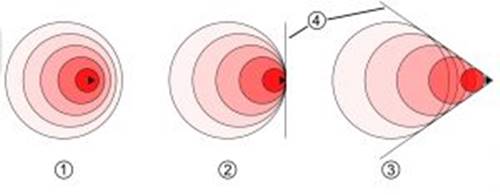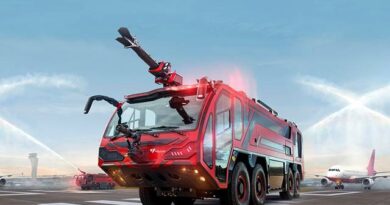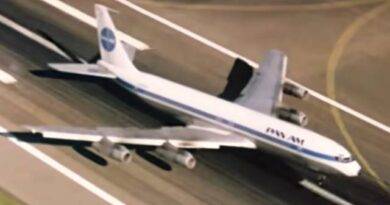Sonic Boom – what is it and why does it occur ?
Since its existence, man has been struggling to transcend the boundaries set by nature. Whether for technological superiority, economic reasons, or just curiosity. These reasons enable the history of science and technology to gain new discoveries and progress. Here, one of the natural boundaries that human beings have crossed is the sound limit. When the speed of sound is exceeded, a violent explosion is heard, this is called sonic boom.
What we call sound is a vibrational wave. Engineers or physicists dealing with fluids call this “disruption.” the effect that disrupts that existing calmness by progressing steadily …
Any sound you hear is a kind of distortion created by an object. In order for this degradation to propagate within air molecules, air molecules must interact with each other and transfer this wave. It’s like the degradation created by a stone that you throw in a bowl of water or a lake.
For this reason, sound cannot propagate in space.
Many of us have noticed that, the waves created by a ship passing by create a radiating effect on the water. Aircraft also create similar effects in the set of air they navigate. We understand the arrival of an airplane from the noise that reaches us before it arrives, because generally the distortions created by the airplane in the air are faster than the airplane. In different words because the airplane is slower than the distorsions it created.
Well, what would happen if an aircraft, while moving, attempted to fly at the same speed or even faster than the sound/disruption it created?
Although this question is not as astonishing as Einstein’s question, “How would I see the world if I get on a light” while traveling through the Tuscan countryside, it is conceptually a similar question.

1. Consider an airplane traveling at any speed slower than sound. As you can see, sound waves are going in front of the plane. As this plane approached us, we would hear its sound before it appeared.
2. The airplane now travels at the speed of sound, in other words, the airplane is traveling with the noise it creates. Overlapping distortion waves form the sound barrier. At this point, the plane is at “transonic” speed. So in transition speed. We would hear the noise of such an airplane as a violent explosion with its image.
3. If the airplane wants to exceed the speed of sound, it has to overcome the sound barrier we mentioned in the second point, and if it does, it becomes faster than the distortion/noise it produces. The image of such an airplane will come after its noise. Soon after we passed the plane, we would hear it again as a violent explosion – sonic boom.
4. The walls indicated by four are called shock waves. They are also the reasons why we hear the sound of the plane as a violent explosion-sonic boom. Shock waves are a significant discontinuity and drastically reduce the kinetic energy of the air, also exerting a force on the structure. The shock in figure 2 is a steep shock and the speed of this shocked air drops again under sound. The ones in figure 3 are oblique shock and the air continues to remain in supersonic regime.
Terms such as supersonic, hypersonic, transonic, which we hear a lot, means “faster than sound”, and are used for vehicles. When used for currents, these adjectives begin to be expressed as “regime” names: Supersonic regime, hypersonic regime.
Mach Number – Speed of sound
Austrian physicist Ernst Mach defined a number for the speed of sound and called it the Mach number. The Mach number is an expression of how many times a speed value is to the speed of sound.
1 Mach speed means the speed of sound. 2 Mach (or Mach 2) means twice the speed of sound.
Subsonic – speed less than 1 Mach,
Transonic- Speed between 0.8 Mach and 1.2 Mach.
Sonic – 1 Mach speed,
Supersonic – Above Mach 1.2 but less than Mach 5,
Hypersonic – Speeds greater than Mach 5.
It can be found in some sources that speeds greater than 10 Mach are called “high hypersonic” speeds.
For more articles click.


